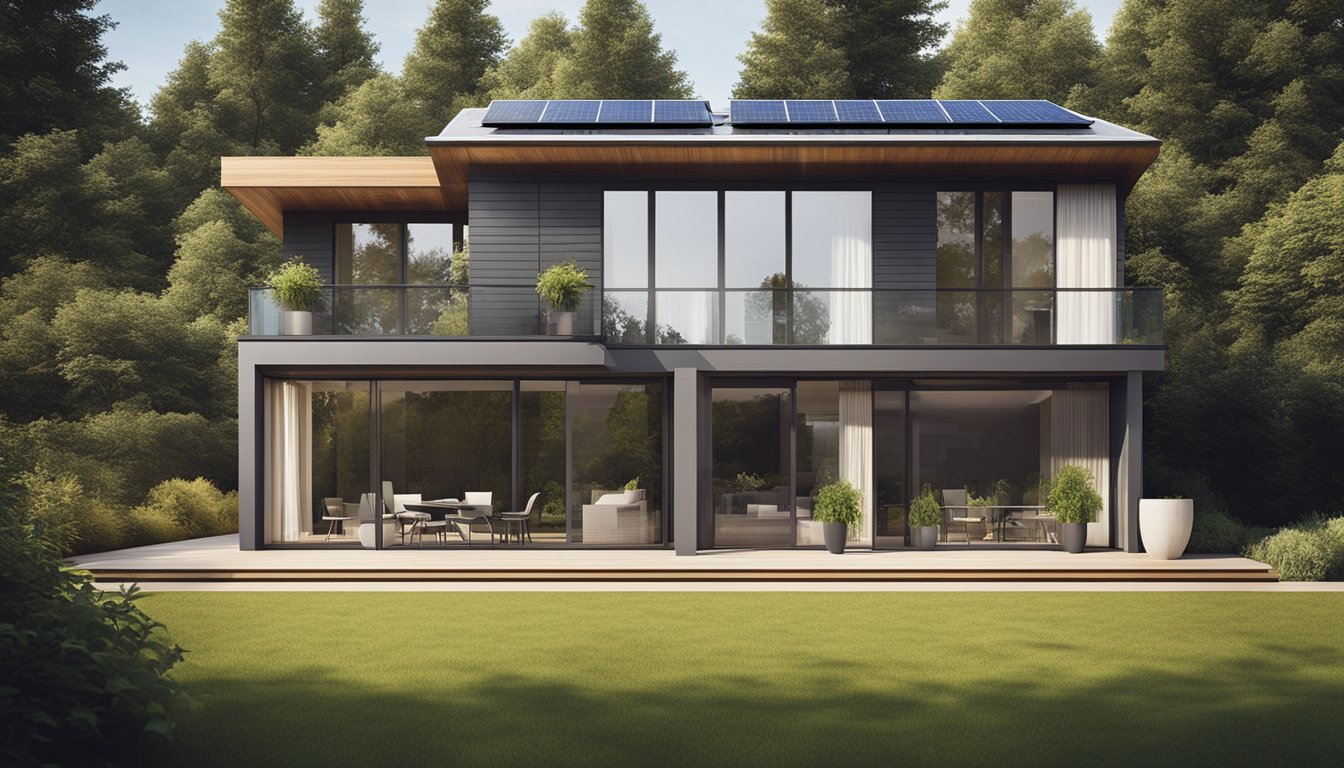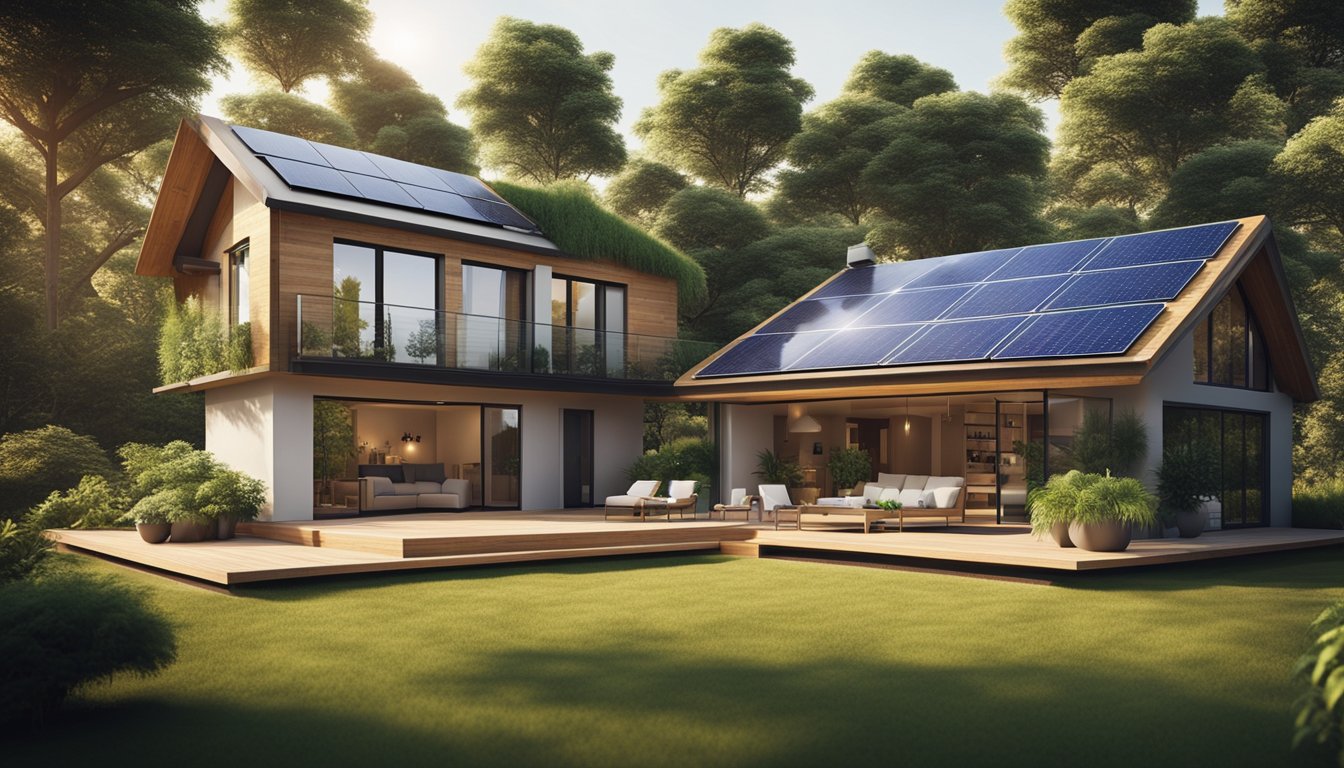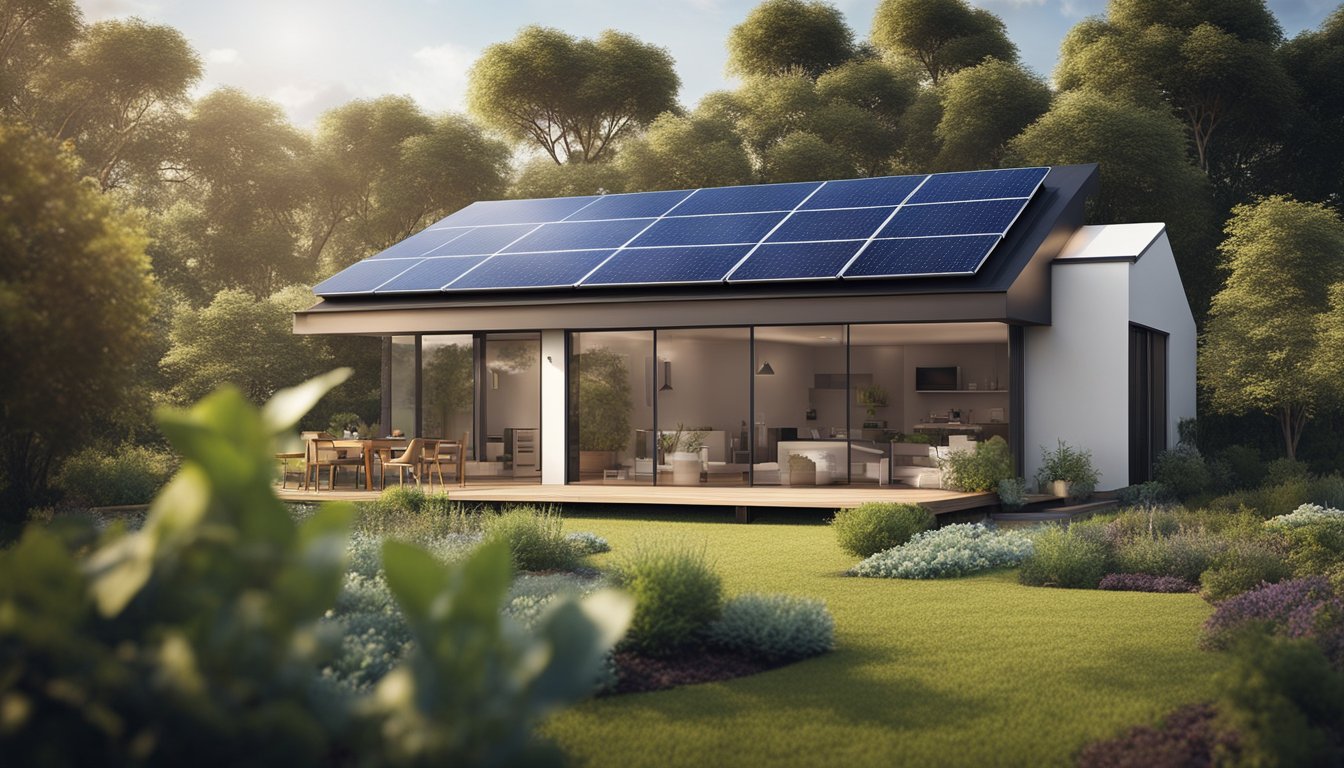Late updated: 22 Apr 2025 12:04
Written by: Daniel Harper
Maximising Energy Efficiency in Eco-Friendly Homes: Essential Strategies and Tips
Maximising energy efficiency in eco-friendly homes is not just about reducing your carbon footprint; it’s about creating a sustainable and cost-effective living environment. By implementing energy-efficient technologies, like smart thermostats and high-efficiency windows, we can significantly reduce energy consumption while enhancing comfort. Utilising renewable energy sources, such as solar panels, and ensuring proper insulation are crucial steps in enhancing the efficiency of our homes.

Our focus is on simple, impactful changes that make a real difference. Small adjustments, like upgrading to energy-efficient lighting, caulking, and using sustainable building materials, contribute to a greener home. Together, these measures improve our quality of life and help protect the environment for future generations.
Key Takeaways
- Implement smart tech and efficient windows.
- Use renewables and proper insulation.
- Small changes lead to big impacts.
Fundamentals of Maximising Energy Efficiency in Eco-Friendly Homes

To maximise energy efficiency in eco-friendly homes, we must explore crucial concepts that guide the reduction of energy consumption and enhance sustainability. Efficient insulation, renewable energy solutions, and optimised HVAC systems are core elements that contribute to long-term savings and a reduced carbon footprint.
Understanding Energy Consumption and Performance
Understanding how energy flows through a home is essential. By analysing energy consumption patterns, we can target areas for improvement, lowering energy bills. An energy audit is a practical first step, highlighting inefficiencies like outdated appliances or poorly insulated areas. By addressing these issues, we make our homes more energy-efficient and sustainable.
Implementing energy-efficient technologies, such as programmable thermostats or energy-efficient lighting, significantly reduces energy usage. Energy performance improvements also contribute to a lower carbon footprint, supporting broader climate change efforts by decreasing greenhouse gas emissions.
Insulation, Air Sealing, and Thermal Performance
Insulation and air sealing are critical to maintaining a comfortable living environment by preventing air leaks. Proper insulation reduces heating and cooling costs by maintaining desired temperatures. Techniques such as caulking and sealing gaps increase energy efficiency and thermal performance.
Advanced insulation techniques, including high-efficiency windows and thermal bridging prevention, further reduce energy consumption. Improved insulation combined with strategic window placement optimises natural light while reducing heating and cooling demands. This results in significant energy savings and enhanced indoor comfort.
Renewable Energy Solutions and Sustainable Practices
Adopting renewable energy solutions significantly lowers utility bills and enhances an eco-friendly home's sustainability. Solar panels are a popular choice for generating clean energy and reducing dependence on non-renewable sources. Other renewable options include wind turbines and geothermal systems, which complement sustainable home designs.
Incorporating sustainable practices like water conservation and passive solar design also boosts a building's environmental benefits. Using solar gain and thermal mass efficiently harnesses natural resources for heating without increasing energy costs. These efforts improve property value and increase long-term financial savings while reducing climate change impacts.
Optimising Heating, Ventilation, and Cooling Systems
Optimising HVAC systems involves selecting energy-efficient models with high seasonal energy efficiency ratios (SEER). Upgrading to efficient heating systems and programmable thermostats enhances energy performance and comfort. The right HVAC system can lower utility bills and lessen environmental impacts through reduced energy consumption.
Proper ventilation balances indoor air quality and energy efficiency. Operable windows and heat recovery units capture and reuse conditioned air, maintaining comfort without excessive energy use. By focusing on HVAC optimisation, we ensure a balance of climate control, energy savings, and reduced greenhouse gas emissions.
Enhancing Comfort, Quality of Life, and Environmental Impact

Eco-friendly homes play a pivotal role in advancing comfort, boosting quality of life, and mitigating environmental impacts. By focusing on indoor air quality, comfort, mental well-being, and energy conservation, we can achieve a harmonious balance between lifestyle and sustainability.
Improving Indoor Air Quality and Safety
In energy-efficient homes, maintaining indoor air quality is paramount. Cleaner, filtered air reduces allergens and pollutants, positively impacting health and safety. Advanced ventilation systems and natural air flow help keep the environment fresh and breathable.
We can utilise materials that emit fewer volatile organic compounds (VOCs), contributing further to a healthier living space. This not only increases comfort but ensures we live in a safer atmosphere, promoting better health outcomes and overall well-being in our daily life.
Boosting Comfort and Mental Well-Being
Eco-friendly homes offer a comfortable living environment through regulated temperatures and effective insulation. This design minimises external temperature fluctuations, keeping interiors warm during winter and cool in summer.
The connection between living spaces and mental well-being cannot be overstated. Smart lighting, noise control, and calming design features can significantly enhance mood. This leads to a better quality of life, reinforcing our physical and mental health.
Reducing Greenhouse Gas Emissions and Environmental Impact
Energy-efficient homes significantly contribute to our effort in reducing greenhouse gas emissions, making our lives more environmentally conscious. By embracing renewable energy sources, such as solar panels, we lessen our dependence on fossil fuels.
With better building materials and design, we achieve a reduced environmental impact. It's about incorporating sustainable solutions that not only protect our planet but also offer lasting benefits for both present and future generations.
Increasing Property Value and Long-Term Financial Benefits
Investing in eco-friendly features enhances property value due to growing demand for sustainable living options. Buyers are increasingly prioritising homes with lower utility costs and energy efficient designs.
Long-term savings arise from reduced energy bills and lower maintenance costs, thanks to durable, sustainable materials. This approach offers financial advantages to homeowners, ensuring sound investments that align with our commitment to energy efficiency and environmental responsibility.
Frequently Asked Questions

Building an energy-efficient, eco-friendly home involves considering construction methods and design principles. Effective weatherproofing and advancements in home framing improve energy conservation, while roofing specifications play a crucial role. Unique concepts like underground 'Earthship' homes bring innovative solutions to energy efficiency in housing.
What are the optimal construction methods for building an energy-efficient home?
To achieve optimal energy efficiency, using sustainable materials and advanced insulation techniques is crucial. Materials with high thermal mass, like concrete or brick, help regulate indoor temperatures. Additionally, integrating high-efficiency HVAC systems can further enhance energy savings.
How can modern design principles contribute to energy conservation in new housing?
Utilising passive solar design takes advantage of sunlight to reduce heating needs. Orienting homes to maximise natural light and incorporating shading devices can significantly lower energy consumption. Efficiently placed windows and doors ensure natural ventilation and cooling.
What methods are most effective for weatherproofing homes to improve energy efficiency?
Effective weatherproofing methods include sealing gaps around windows and doors and applying high-quality insulation. Utilising airtight building envelopes prevents heat loss. Additionally, adding vapour barriers can prevent moisture intrusion, maintaining structural integrity and energy efficiency.
What are the recommended specifications for an energy-saving roof?
The ideal energy-saving roof includes reflective materials that minimise heat absorption. A well-insulated roof with proper ventilation systems helps maintain consistent indoor temperatures. Opting for light-coloured or green roofs can also contribute to overall energy efficiency.
Can advanced framing techniques significantly reduce energy consumption in homes?
Yes, advanced framing techniques optimise material use and increase insulation space. Techniques include using fewer but wider studs and placing insulation between them effectively. This increases thermal performance without compromising structural integrity.
How do underground 'Earthship' homes compare in energy efficiency to traditional buildings?
'Earthship' homes utilise thermal mass and passive solar heating for exceptional energy efficiency. Built partially underground, they naturally regulate indoor temperatures. These homes often feature integrated renewable energy systems and rainwater collection, further reducing their environmental footprint compared to traditional buildings.
